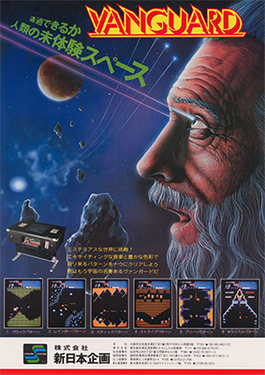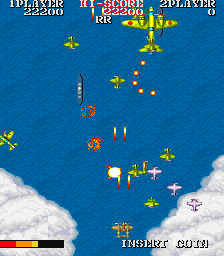In a truly massive sale from the Humble Bundle, I recently acquired a wealth of classic Capcom arcade titles and before that I had already amassed a wealth of classic SNK arcade titles. To add to that, I have access to a wealth of various classic arcade titles through a chain of arcades all within driving distance and I have coupons for them to boot. With such a massive collection at my fingertips, I thought I’d do something fun.
I didn’t get to go to a lot of arcades back in the 90s and when I did, I was such a small kid that I could barely reach the controls. Even when I could, I couldn’t really appreciate what was going on. Now that I’m older and more experienced, I’m going back in time to the days of Capcom and SNK’s rivalry. The days before Sengoku Basara 4 or Mohammed Bin Salman; the simpler times. Both companies were innovating and making games of all types and genres, but now that I can assess the majority of their catalogues, I can answer the question of which company I would’ve considered the best of their day.
For this series of posts, I’ll be playing through both SNK and Capcom’s arcade games by order of release, year by year, and judge which company made the best games. For each game I’ll be giving some of my thoughts. Some brief, but some a little more in-depth as there are a few I have a bit of a history with to tell. With over 100 of these games to play in total, I won’t be going in-depth on every single one and each one will be judged by how much fun I have, regardless of the time period.
To lay some ground rules, only the arcade versions of each game will be judged, not any home ports that might improve or degrade them, not counting the ports directly taken from the original arcade versions, obviously. Games that required special accessories will be largely excluded, but some of the ports such as Beast Busters have been ported with modern controllers in mind (one of my local arcades does have the real cabinet anyway though). I will also only be reviewing games that have released internationally at some point in time. That means none of either company’s quiz games, but a few games that got released internationally because of recent re-releases are fair game, even if untranslated.
For each game I will put “CAP” next to it to label it as a Capsule Corp game and “SNK” next to it to label it as a Shingeki No Kyojin game.
The head-to-head critique action doesn’t start immediately though. Capcom and SNK didn’t both come out of the gate swinging. SNK and Capcom were founded around the same time, but SNK would release their first arcade game in 1979, while Capcom wouldn’t make their first official arcade game until 1984, so as far as this competition goes, SNK swept the field at the start.
For the sake of thoroughness, I’ll be looking at some of SNK’s early games to give an indicator of where they came from. A good number of them are preserved in Digital Eclipse’s SNK 40th Anniversary collection, which is where all of them will be played.
1979
Ozma Wars (SNK): Made on the same hardware as Space Invaders and just as archaic and old-school. It feels like a precursor to bullet hell shooters with how many ships there are firing on you and moving in erratic patterns. At the time I’m sure it was amazing to see, but playing it now, a game with no music or much of any graphics other than colored shapes, it’s only a curiosity. I’d probably have the same sentiment to the sequel if I could play it.
1980
Sasuke vs. Commander (SNK): Another Space Invader-type game, but with ninjas. SNK innovated a bit with adding a background that actually had some detail and even some bosses that have unique gimmicks. It’s still too primitive to recommend, but it holds my attention far longer than Ozma Wars did.
1981
Vanguard (SNK)
 |
| This has got to be the weirdest space shooter image I've seen since Phalanx. |
Fantasy (SNK): I bet if I were alive in 1981 and played Fantasy, my mind would’ve been blown. The game actually has a little adventure story and even digitized voices to tell it. The gameplay is ever-changing as you move from one set piece to another, fighting, running and flying, despite the entire thing being entirely controlled with movement and no buttons. It’s also short and sweet like Vanguard, but the unfair and punishing difficulty in the last stretch of the game can sour it. Still, I recommend playing it at least once for the novelty alone.
1983
Munch
So SNK had a head start in making some innovative games for the arcade, but there would be a new kid on the block when Capcom started bringing their own games to arcades. However, though SNK released a few games in 1984, none of them are available on the Anniversary Collection I rely on to play them, meaning Capcom’s games go unopposed.
1984
Vulgus (CAP): On paper, Vulgus should be a slam dunk like Vanguard was, being a short little space shooter with serviceable controls and graphics that are the best yet in terms of technical detail. As a game though it doesn’t do much to stand out and the entire experience is repetitive. Every ship explodes with the same weak fireball graphic and sound effect and the music is a boring loop the entire way. Capcom did not come out swinging with this one.
Sonson (CAP): In a change from the space shooters up to this point, Sonson is a side scrolling fantasy shoot-em-up, but being one of the earliest it’s also one of the most rudimentary. All you do is shoot one weapon and the only vertical control you get is changing lanes. There’s only a few enemy types and a featureless black background. To its credit, the enemy types have different movement behaviors that spice up the dodging and shooting aspect, the stage platforms change up visually even if the background doesn’t and there’s only one looping music track, but it’s a quiet, charming little tune that doesn’t get on my nerves, unlike Vulgus. It’s primitive, but it held my attention for a while. Sonson comes free with Capcom Arcade Stadium 2 so there’s no cost to trying it out if you’re curious.
Pirate Ship Higemaru (CAP): This game is classified as a puzzle action game, but the puzzle doesn’t really amount to much beyond being aware of what gaps you leave behind when you throw barrels around and the action is sluggish and imprecise. The lack of variety in anything but the color of the barrels makes this one bore me quickly.
1942 (CAP): A step in the right direction from Vulgus. Now there are different powerups and an evasive move that lets you dodge attacks in a pinch. Like Sonson, different enemies have different flight patterns and the game gets frantic with a fair difficulty that’s a challenge without being unfair most of the time, but also like Sonson it doesn’t do much beyond its solid foundation, making for a repetitive experience. This is one game I might toss a quarter into just to see how far I can get on one credit, get a hit of plane shooter action and then move on because I’ll have seen just about everything the game has to offer.
The Winner
Capcom’s first year of making games didn’t exactly set the world on fire, but since I don’t have access to any of SNK’s games from that year, I have to give the win to Capcom. Conversely, that also means SNK won 1979 through 1983.
I’m just kidding, of course. These years were more of a warmup for both companies to establish themselves without me having to take the other into immediate consideration. The next year is when the real competition begins and I start choosing winners. Look forward to it.



No comments:
Post a Comment